Related Research Articles
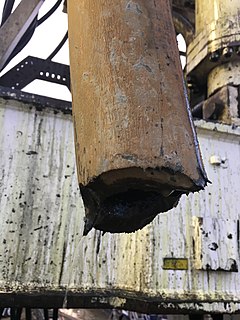
A drill string on a drilling rig is a column, or string, of drill pipe that transmits drilling fluid and torque to the drill bit. The term is loosely applied to the assembled collection of the smuggler pool, drill collars, tools and drill bit. The drill string is hollow so that drilling fluid can be pumped down through it and circulated back up the annulus.

Directional drilling is the practice of drilling non-vertical bores. It can be broken down into four main groups: oilfield directional drilling, utility installation directional drilling, directional boring, and surface in seam (SIS), which horizontally intersects a vertical bore target to extract coal bed methane.
Well logging, also known as borehole logging is the practice of making a detailed record of the geologic formations penetrated by a borehole. The log may be based either on visual inspection of samples brought to the surface or on physical measurements made by instruments lowered into the hole. Some types of geophysical well logs can be done during any phase of a well's history: drilling, completing, producing, or abandoning. Well logging is performed in boreholes drilled for the oil and gas, groundwater, mineral and geothermal exploration, as well as part of environmental and geotechnical studies.

A drilling rig is an integrated system that drills wells, such as oil or water wells, in the earth's subsurface. Drilling rigs can be massive structures housing equipment used to drill water wells, oil wells, or natural gas extraction wells, or they can be small enough to be moved manually by one person and such are called augers. Drilling rigs can sample subsurface mineral deposits, test rock, soil and groundwater physical properties, and also can be used to install sub-surface fabrications, such as underground utilities, instrumentation, tunnels or wells. Drilling rigs can be mobile equipment mounted on trucks, tracks or trailers, or more permanent land or marine-based structures. The term "rig" therefore generally refers to the complex equipment that is used to penetrate the surface of the Earth's crust.

In geotechnical engineering, drilling fluid, also called drilling mud, is used to aid the drilling of boreholes into the earth. Often used while drilling oil and natural gas wells and on exploration drilling rigs, drilling fluids are also used for much simpler boreholes, such as water wells. One of the functions of drilling mud is to carry cuttings out of the hole.
Logging while drilling (LWD) is a technique of conveying well logging tools into the well borehole downhole as part of the bottom hole assembly (BHA).
A drilling rig is used to create a borehole or well in the earth's sub-surface, for example in order to extract natural resources such as gas or oil. During such drilling, data is acquired from the drilling rig sensors for a range of purposes such as: decision-support to monitor and manage the smooth operation of drilling; to make detailed records of the geologic formations penetrated by a borehole; to generate operations statistics and performance benchmarks such that improvements can be identified, and to provide well planners with accurate historical operations-performance data with which to perform statistical risk analysis for future well operations. The terms measurement while drilling (MWD), and logging while drilling (LWD) are not used consistently throughout the industry. Although these terms are related, within the context of this section, the term MWD refers to directional-drilling measurements, e.g., for decision support for the wellbore path, while LWD refers to measurements concerning the geological formations penetrated while drilling.
Geosteering is the optimal placement of a wellbore based on the results of realtime downhole geological and geophysical logging measurements rather than three-dimensional targets in space. The objective is usually to keep a directional wellbore within a hydrocarbon pay zone defined in terms of its resistivity, density or even biostratigraphy. In mature areas, geosteering may be used to keep a wellbore in a particular section of a reservoir to minimize gas or water breakthrough and maximize economic production from the well. In the process of drilling a borehole, geosteering is the act of adjusting the borehole position on the fly to reach one or more geological targets. These changes are based on geological information gathered while drilling. Originally only a projected target would be aimed for with crude directional tools. Now the advent of rotary steerable tools and an ever-increasing arsenal of geophysical tools enables well placement with ever-increasing accuracy. Typically a basic tool configuration will have directional and inclination sensors, along with a gamma ray tool. Other options are neutron density, look ahead seismic, downhole pressure readings et al. Due to the vast volume of data generated, especially by imaging tools, the data transmitted to surface is a carefully selected fraction of what is available. Data is collected in memory for a data dump when back on surface with the tool.
Underbalanced drilling, or UBD, is a procedure used to drill oil and gas wells where the pressure in the wellbore is kept lower than the static pressure of the formation being drilled. As the well is being drilled, formation fluid flows into the wellbore and up to the surface. This is the opposite of the usual situation, where the wellbore is kept at a pressure above the formation to prevent formation fluid entering the well. In such a conventional "overbalanced" well, the invasion of fluid is considered a kick, and if the well is not shut-in it can lead to a blowout, a dangerous situation. In underbalanced drilling, however, there is a "rotating head" at the surface - essentially a seal that diverts produced fluids to a separator while allowing the drill string to continue rotating.

In the oil and gas industries, coiled tubing refers to a very long metal pipe, normally 1 to 3.25 in in diameter which is supplied spooled on a large reel. It is used for interventions in oil and gas wells and sometimes as production tubing in depleted gas wells. Coiled tubing is often used to carry out operations similar to wirelining. The main benefits over wireline are the ability to pump chemicals through the coil and the ability to push it into the hole rather than relying on gravity. Pumping can be fairly self-contained, almost a closed system, since the tube is continuous instead of jointed pipe. For offshore operations, the 'footprint' for a coiled tubing operation is generally larger than a wireline spread, which can limit the number of installations where coiled tubing can be performed and make the operation more costly. A coiled tubing operation is normally performed through the drilling derrick on the oil platform, which is used to support the surface equipment, although on platforms with no drilling facilities a self-supporting tower can be used instead. For coiled tubing operations on sub-sea wells a mobile offshore drilling unit (MODU) e.g. semi-submersible, drillship etc. has to be utilized to support all the surface equipment and personnel, whereas wireline can be carried out from a smaller and cheaper intervention vessel. Onshore, they can be run using smaller service rigs, and for light operations a mobile self-contained coiled tubing rig can be used.
A rotary steerable system (RSS) is a form of drilling technology used in directional drilling. It employs the use of specialized downhole equipment to replace conventional directional tools such as mud motors. They are generally programmed by the measurement while drilling (MWD) engineer or directional driller who transmits commands using surface equipment which the tool responds to, and gradually steers into the desired direction. In other words, a tool designed to drill directionally with continuous rotation from the surface, eliminating the need to "slide" a mud motor.
Oilfield terminology refers to the jargon used by those working in fields within and related to the upstream segment of the petroleum industry. It includes words and phrases describing professions, equipment, and procedures specific to the industry. It may also include slang terms used by oilfield workers to describe the same.
In the oil and gas industry, a drill bit is a tool designed to produce a generally cylindrical hole (wellbore) in the earth’s crust by the rotary drilling method for the discovery and extraction of hydrocarbons such as crude oil and natural gas. This type of tool is alternately referred to as a rock bit, or simply a bit. The hole diameter produced by drill bits is quite small, from about 3.5 inches (8.9 cm) to 30 inches (76 cm), compared to the depth of the hole, which can range from 1,000 feet (300 m) to more than 30,000 feet (9,100 m). Subsurface formations are broken apart mechanically by cutting elements of the bit by scraping, grinding or localized compressive fracturing. The cuttings produced by the bit are most typically removed from the wellbore and continuously returned to the surface by the method of direct circulation.

Tripping pipe is the physical act of pulling the drill string out of the wellbore and then running it back in. This is done by physically breaking out or disconnecting every other 2 or 3 joints of drill pipe at a time and racking them vertically in the derrick. When feasible the driller will start each successive trip on a different "break" so that after several trips fresh pipe dope will have been applied to every segment of the drill string.

Drill pipe, is hollow, thin-walled, steel or aluminium alloy piping that is used on drilling rigs. It is hollow to allow drilling fluid to be pumped down the hole through the bit and back up the annulus. It comes in a variety of sizes, strengths, and wall thicknesses, but is typically 27 to 32 feet in length. Longer lengths, up to 45 feet, exist.
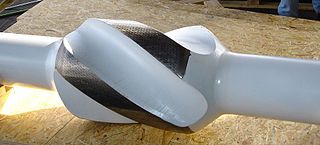
A drilling stabilizer is a piece of downhole equipment used in the bottom hole assembly (BHA) of a drill string. It mechanically stabilizes the BHA in the borehole in order to avoid unintentional sidetracking, vibrations, and ensure the quality of the hole being drilled.
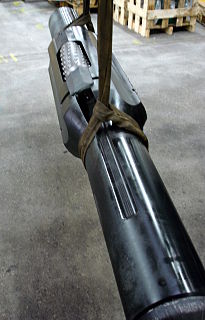
Roller reamers are employed in boring operations for the oil & gas industry. The main function of roller reamers cut earth formations to enlarge the borehole to the desirable size during well drilling operation, which may be the original size of the drill bit in the case where the drill bit wears to be under-gauged. However, even for new drill bits, roller reamers are employed to cut formations because the bit does not always drill a true bore hole and because of slight lateral shifting which is inherent in the drilling operation, which shifting leaves ledges and other distortions. Additionally, the second function of a roller reamer is to keep the drill stem in the center of the hole at the specific position of placement of the roller-reamer. In providing such a function, a reamer is often referred to as a stabilizer. Maintaining the drill stem centered has many beneficial effects, its primary one being minimizing unintentional hole-angle directional drilling.
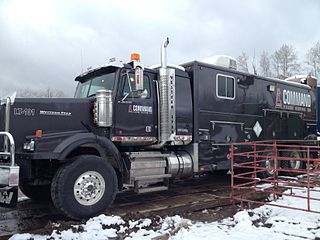
Pipe recovery is a specific wireline operation used in the oil and gas industry, when the drill string becomes stuck downhole. Stuck pipe prevents the drill rig from continuing operations. This results in costly downtime, ranging anywhere from $10,000-1,000,000 per day of downtime, therefore it is critical to resolve the problem as quickly as possible. Pipe recovery is the process by which the location of the stuck pipe is identified, and the free pipe is separated from the stuck pipe either by a backoff or a chemical cut. This allows fishing tools to subsequently be run down hole to latch onto and remove the stuck pipe.
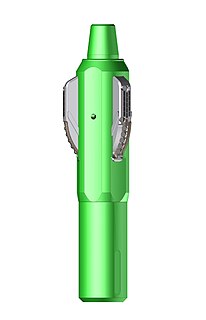
An underreamer is a device used to enlarge the borehole below an existing casing or restriction, during a well drilling operation. It can be positioned either above the drill bit or above a pilot assembly run inside the existing borehole.
References
- ↑ William C. Lyons, ed. (1996). Standard Handbook of Petroleum and Natural Gas Engineers. Houston Texas: Gulf Publishing Company.
- ↑ Michael L. Payne; Lance D. Underwood. Michael J. Economides; Larry T. Watters; ShariDunn-Norman (eds.). Halliburton: Petroleum Well Construction. John Wiley and Sons.
- ↑ Tom H. Hill; Randy C. Money. (1992). Drill Stem Design and Inspection. Houston Texas: T.H. Hill and Associates Inc.